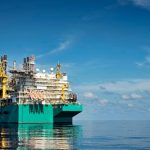By Ian Lewis
Floating LNG developers are seeking to build on the momentum created by successful deployments
The successful deployment of Golar LNG’s Hilli Episeyo floating liquefied natural gas (FLNG) facility off Cameroon gives hope that further investment can now be enticed to a sector that has suffered its fair share of teething problems.
Hilli Episeyo has been operational on the Kribi development, operated by French firm Perenco, since March and shipped its first cargo in May. By late August, the facility was preparing to offload its sixth cargo, Iain Ross, Golar’s chief executive, said on a second quarter results conference call. All four trains on the 1.2m tonnes a year (t/y) facility had been successfully tested at above nameplate capacity, though only two were currently being used, until Perenco is ready to supply more gas from Kribi, he said.
The news will be encouraging for those seeking relatively low-cost FLNG solutions. Hilli Episeyo is estimated to have cost less than $1bn per million t/y of LNG capacity—around a third of the cost per unit of Shell’s 3.6m t/y Prelude FLNG project, which is due to start operations off Western Australia later this year.
“Early FLNG designs tended to be over-engineered, risking an uncontrollable rise in project expenditure. But the new modular designs are much simpler and cheaper to build. They are intended for today’s requirements rather trying to anticipate future needs that may not become reality,” says Mark Adeosun, an FLNG analyst at UK-based Westwood Energy.
Golar’s facility is only the second to start up globally-after Petronas’ PFLNG Satu project in Malaysia—but developers are lining up further FLNG-based gas projects, both in Africa and further afield.
Ross confirmed that Golar is working on front-end engineering and design work for BP with a view to using it FLNG model—using converted LNG carriers—on theTortue/Ahmeyim development, which straddles the border between Senegal and Mauritania. That development could produce its first gas in 2021.
Golar is also involved in design for the proposed Delfin FLNG project in the Gulf of Mexico. Delfin LNG, a subsidiary of Fairwood Group, hopes to use four FLNG vessels offshore in Louisiana to produce up to 13m t/y of LNG from US shale gas. The company envisages shipping cargoes from around 2021, but has yet to take a final investment decision (FID) on the project.
Another proposed FLNG facility off Louisiana is the Main Pass Energy Hub, run by Oslo-based Global LNG Services, which has a license to export 24m t/y of LNG using two vessels based on GLS’ own “Liqui-Max” design. This long-mooted project is now making some progress, In June, GLS said it had chosen Baker Hughes GE to provide turbine technology for the project. It also said its technology could produce LNG with capital expenditure of less than $400m per million t/y.
At the smaller end of the market, China’s Wison was awarded a contract to work on a design for an FLNG facility to be used by Houston-based Western LNG. The firm is seeking to ship LNG based on reserves in British Columbia, western Canada, to Asian markets.
Wison built the 500,000 t/y Caribbean FLNG facility, a barge-based design for use close to shore. The vessel was delivered to Exmar in 2017, but it has yet to find a home after plans to use it in Colombia fell through.
In East Africa. Eni’s 3.4m t/y Coral South FLNG facility—likely to produce Mozambique’s first LNG exports in 2022—is being built at Keppel’s Singapore yard.
Meanwhile, London-based New Age is seeking to develop FLNG projects in Cameroon and Congo-Brazzaville. First up is looks likely to be the Etinde project in Cameroon, where the company signed an agreement with the government in June to develop an FLNG project. New Age said it had awarded a contract to develop the project with a consortium led by SBM Offshore, in conjunction with JGC Corporation and Chinese partners. The company has targeted first production for 2022, but has yet to take an FID.
Proven technology
Chinese companies and money play a major role in several of these FLNG developments, either as investors or off takers. Golar has proved successful in tapping Chinese investors for its projects and New Age has been considering leasing arrangements for FLNG facilities that could be built in Chinese shipyards.
Meanwhile, Delfin’s chief executive Frederick Jones told Reuters last November that it had agreed a preliminary 15-year sales deal with China Gas Holdings for 3m t/y from 2021 and that it was pursuing Chinese banks to finance the $8bn project.
However, the Fortuna FLNG project in Equatorial Guinea, which had looked likely to be the next project to come onstream, is now on hold, following a failure to agree terms with Chinese backers in 2017.
Operator Ophir had been developing Fortuna with OneLNG, a joint venture between Golar and Schlumberger, but the oilfield services giant pulled out in May this year, when no workable debt financing for the $1.2bn required could be put in place. Ophir is now under pressure from the Equatorial Guinea government to come up with a new plan.
“The bottleneck for FLNG is project financing, not the technology, which has been proven,” says Westwood’s Adeosun.
- Golar has already awarded the contract to Singapore’s Keppel shipyard to convert the Gandria LNG carrier into the FLNG facility for Fortuna. If Fortune can’t be revived, that vessel may now be used on BP’s Senegal/Mauritania project instead.
Source: Petroleum Economist








